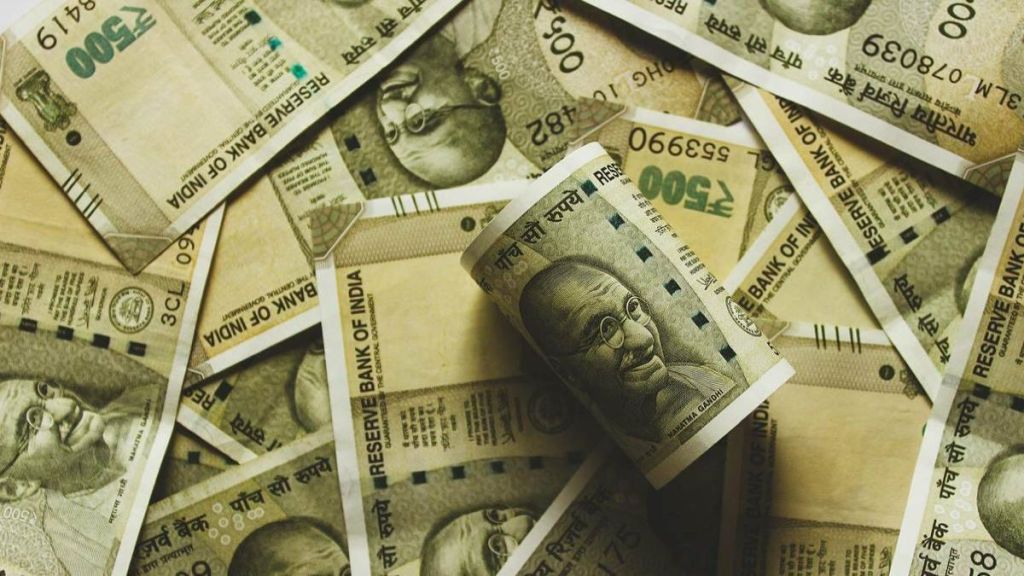The big news on trade in July was that China’s exports fell by 14.5% (modulated by a currency decline of 6.8%), after falling 12.4% in June (with a currency decline of 7.1%); with China accounting for 15% of global trade. It is a definitive sign that global growth is slowing. Imports fell sharply as well, reflecting the sharp slowdown within China, which, again, bodes poorly for the global economy.
A bright spot in this picture is Japan, where, although exports in July were down 0.3% in USD terms, due to a currency depreciation of 3.35% over the previous year. Exports in JPY terms actually grew by 3%; in June, Japan’s exports grew by 1.5%, which, with the currency impact of 5.35%, calculated out to export growth in JPY terms of nearly 7%, which doubtlessly contributed to Japan’s surprise smart 6% growth in the April-June quarter.
Indeed, Japan’s export performance over the past few years has been an unheralded story. Exports rose from about ¥4 trillion in March 2020 to ¥9 trillion in October 2022; converting to USD at the average monthly exchange rate, exports grew from $37.2 billion to $61.3 billion over the period, a rise of 65%! Perhaps unsurprisingly, this was accompanied by a currency depreciation of a gigantic 37%.
To be sure, this sterling performance was in the backdrop of strong global trade, which grew by 4.3% in 2021 (from the pandemic trough) and 3.5% in 2022. And, obviously, the sharply weaker yen helped the performance.
Bringing it all back home, there have been a couple of articles recently—one by an ex-deputy governor of RBI (an old friend), with whom I have frequently disagreed in the past, often to my regret—that are calling for a weaker (and, in one case, much weaker) rupee as one of the key requirements for India’s growth, leveraging the export competitiveness window. The rupee is at least 5% overvalued compared to its REER and it would need to be at least a few percentage points undervalued to give exports a significant kick upwards—this would take the rupee to near 90.
Looking at our alarming trade figures —exports in July were down 15.9% (accompanied by a comparatively modest depreciation of 3.2%)—I am beginning to consider that issue more carefully. I have long felt that the rupee is already extremely undervalued, judging from the cost of personal expenses (hotel rooms, restaurants) here as compared to overseas —and, frighteningly, I am going on a holiday in Europe next week. Perhaps, even more relevant is the fact that The Economist’s Big Mac index regularly shows the rupee as one of the most undervalued currencies. And, of course, in a world where global trade is slowing—the WTO is expecting global trade growth of just 1.7% this year—a weaker rupee may only serve to boost exporter profits rather than actually generate more exports in dollar terms.
Contrariwise, and more importantly, it looks like the market has made up its mind. RBI very promptly pulled the rupee up above 83 as soon as it dared to open below that level on Monday, but over the Independence Day holiday(s), the rupee weakened to 83.50 in the NDF market. While RBI protected it with off-shore intervention, this morning the rupee opened a tad below 83 and is already trading at an all-time low of 83.16.
RBI remains on the job trying to modulate the decline—it appears convinced that the right choice is to keep the rupee as strong as possible to contain inflation. In particular, with the always-on political season, uncertainties of the monsoon and already dangerously high vegetable prices, it is important to protect against rising food price inflation, which would be exacerbated by a weak rupee given that we import nearly $100 billion of food and food products annually.
However, that job will get increasingly difficult if/when we see a surge in long USD open interest in the futures market—in fact, it is surprising that it hasn’t begun yet. In any event, it is clear that volatility will rise until a new lower range for the rupee is determined.


